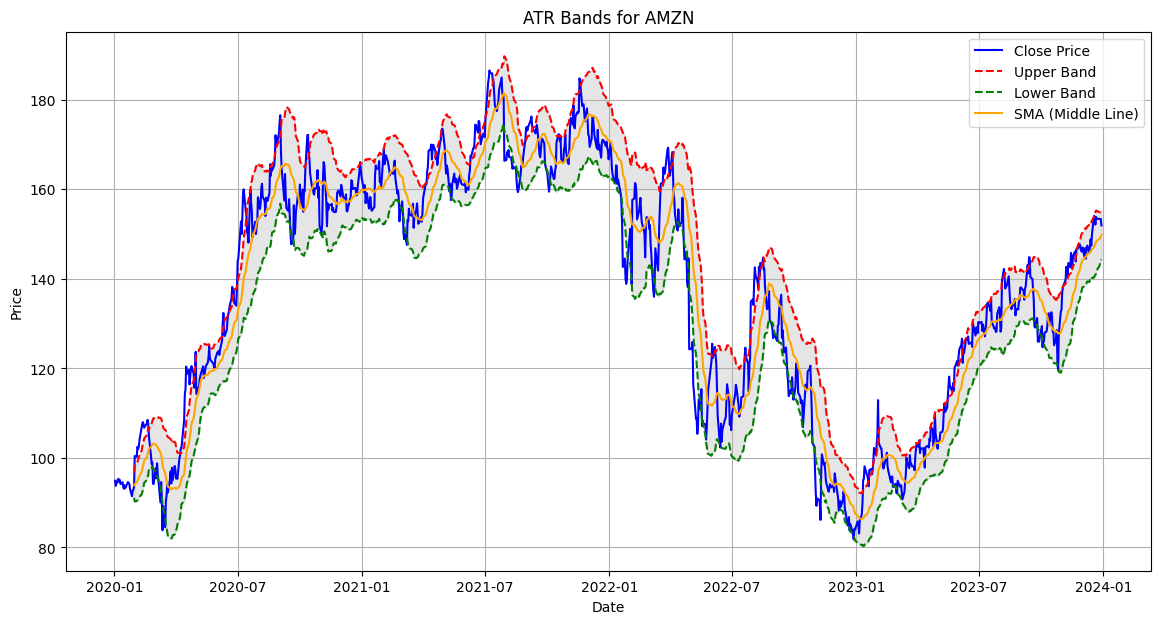On-Balance-Volume
Fri 14 November 2025
# Created: 20250103
import pyutil as pyu
pyu.get_local_pyinfo()
'conda env: ml312-2024; pyv: 3.12.7 | packaged by Anaconda, Inc. | (main, Oct 4 2024, 13:27:36) [GCC 11.2.0]'
print(pyu.ps2("requests"))
requests==2.32.3
import yfinance as yf
import pandas as pd
import numpy as np
import matplotlib.pyplot as plt
import yfinance as yf
import pandas as pd
import matplotlib.pyplot as plt
# Step 1: Download historical data
symbol = "^GSPC" # S&P 500 as an example
start = "2020-01-01"
end = "2023-12-31"
data = yf.download(symbol, start=start, end=end)
# Step 2: Calculate OBV
def calculate_obv(data):
obv = [0] # Initialize OBV with zero for the first row
for i in range(1, len(data)):
# Extract scalar values for the current and previous Close and Volume
current_close = data['Close'].iloc[i]
previous_close = data['Close'].iloc[i - 1]
current_volume = data['Volume'].iloc[i]
# Calculate OBV based on price movement
if current_close > previous_close:
obv.append(obv[-1] + current_volume)
elif current_close < previous_close:
obv.append(obv[-1] - current_volume)
else:
obv.append(obv[-1])
# Add OBV to the DataFrame
data['OBV'] = obv
return data
# Apply the OBV calculation
data = calculate_obv(data)
# Step 3: Plot OBV
plt.figure(figsize=(14, 7))
# Plot Close Price
plt.subplot(2, 1, 1)
plt.plot(data['Close'], label='Close Price', color='blue')
plt.title(f'{symbol} Close Price')
plt.xlabel('Date')
plt.ylabel('Price')
plt.legend()
plt.grid(True)
# Plot OBV
plt.subplot(2, 1, 2)
plt.plot(data['OBV'], label='On-Balance Volume (OBV)', color='purple')
plt.title('On-Balance Volume (OBV)')
plt.xlabel('Date')
plt.ylabel('OBV')
plt.legend(loc='best')
plt.grid(True)
plt.tight_layout()
plt.show()
[*********************100%***********************] 1 of 1 completed
---------------------------------------------------------------------------
ValueError Traceback (most recent call last)
/tmp/ipykernel_1002167/3899796312.py in ?()
30 data['OBV'] = obv
31 return data
32
33 # Apply the OBV calculation
---> 34 data = calculate_obv(data)
35
36 # Step 3: Plot OBV
37 plt.figure(figsize=(14, 7))
/tmp/ipykernel_1002167/3899796312.py in ?(data)
18 previous_close = data['Close'].iloc[i - 1]
19 current_volume = data['Volume'].iloc[i]
20
21 # Calculate OBV based on price movement
---> 22 if current_close > previous_close:
23 obv.append(obv[-1] + current_volume)
24 elif current_close < previous_close:
25 obv.append(obv[-1] - current_volume)
~/miniconda3/envs/ml312-2024/lib/python3.12/site-packages/pandas/core/generic.py in ?(self)
1575 @final
1576 def __nonzero__(self) -> NoReturn:
-> 1577 raise ValueError(
1578 f"The truth value of a {type(self).__name__} is ambiguous. "
1579 "Use a.empty, a.bool(), a.item(), a.any() or a.all()."
1580 )
ValueError: The truth value of a Series is ambiguous. Use a.empty, a.bool(), a.item(), a.any() or a.all().
def show_graph(symbol):
pass
show_graph("AMZN")
[*********************100%***********************] 1 of 1 completed

Score: 5
Category: stockmarket